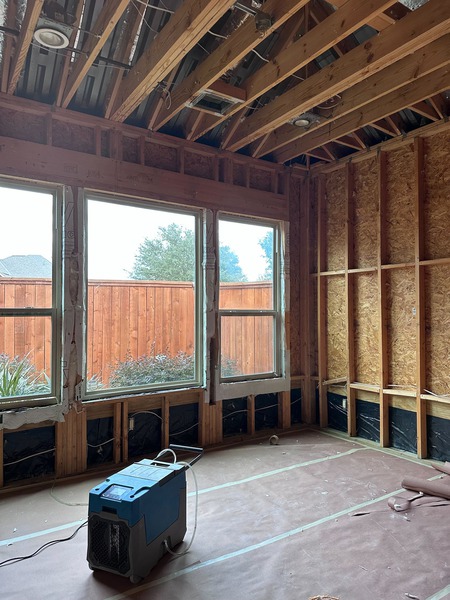What Are Common Causes of Property Damage?

Property damage can be a distressing experience, both emotionally and financially. Understanding the causes of property damage is crucial for homeowners looking to protect their investments. From natural disasters to human error, numerous factors can contribute to property damage. In this article, we’ll cover some common causes and offer insights into how you can minimize risks. By being better informed, homeowners can take proactive steps to safeguard their homes and avoid unnecessary repairs and expenses.
Natural Disasters
Natural disasters are often unpredictable and can cause significant damage. These events can lead to costly repairs and significant loss if you’re not adequately prepared. Below are some common natural disasters that can impact properties:
-
Floods: Excessive rainfall or poorly designed drainage systems can lead to flooding, which can damage the foundation, walls, and electrical systems.
-
Hurricanes and Storms: High winds and flying debris can cause structural damage to roofs, windows, and siding.
-
Earthquakes: In regions prone to seismic activity, the shaking of the ground can crack walls and foundations.
-
Wildfires: Homes near forested areas are at risk of being engulfed by fires, causing complete destruction.
-
Heavy Snowfall and Ice: Snow and ice accumulation can lead to roof collapses and water damage from melting snow.
Human Errors
Sometimes, property damage is the result of human error. While these mistakes can often be avoided with due diligence, they are nonetheless common causes of damage:
-
Neglect: Failing to maintain important home systems, like plumbing and HVAC, can lead to leaks or breakdowns.
-
DIY Projects Gone Wrong: Attempting repairs or renovations without proper knowledge can cause more harm than good.
-
Accidental Fires: Misplaced candles or electrical faults can spark fires, leading to extensive damage.
-
Water Damage: Leaving taps running or not fixing leaks in time can result in serious water damage.
-
Overloading Electrical Circuits: Plugging too many appliances into one outlet can cause electrical fires.
Invasive Pests
Invasive pests can be a severe problem, often leading to structural damage over time. It’s essential to regularly inspect your property for signs of pest infestations:
-
Termites: These pests can eat through wood, compromising the structural integrity of your home.
-
Rodents: Rats and mice can chew through electrical wires, leading to potential fire hazards.
-
Carpenter Ants: Similar to termites, carpenter ants can destroy wooden structures.
Regular pest control measures and inspections can help you catch infestations early, saving you from more significant damage down the line.
Mould and Mildew
Mould and mildew are less dramatic but can be equally damaging and even hazardous to health. Moisture in areas like basements or bathrooms creates a breeding ground for these fungi. Initial mould infestations can be managed with household cleaners. However, larger infestations may require expert mould removal services to ensure your home is safe and clean.
Environmental Factors
Environmental changes can contribute to property damage over time. Changes in the climate or nearby developments can leave your property more vulnerable. Here are some environmental factors to consider:
-
Soil Erosion: Changes in nearby land can cause soil to shift and erode, impacting your home’s foundation.
-
Tree Roots: Tree roots seeking water can grow into your plumbing, causing blockages and breaks.
-
Nearby Construction: Construction vibrations can lead to settlement or cracking in your home’s structure.
Being aware of these environmental issues allows you to plan preventative measures, like reinforcing foundations or sealing entry points.
Structural Issues
Some properties may suffer from structural weaknesses due to faulty design or construction errors. Regular home inspections can help you identify and address these issues before they become severe:
-
Poor Construction: Substandard materials or construction techniques can compromise a building’s integrity.
-
Foundation Problems: Cracks or settlements in foundational structures can lead to serious damage over time.
-
Roof Deterioration: Damaged or missing shingles can expose homes to rain and wind damage.
Addressing structural issues quickly is crucial, as delays can lead to more extensive damage and expensive repairs.
Preventative Actions
While some causes of property damage can’t be avoided, many can be minimized with proactive measures. Taking preventative steps can save you a lot of stress and expense:
-
Regular Maintenance: Schedule regular inspections for plumbing, electrical, and structural systems.
-
Install Alarms and Detectors: Smoke and carbon monoxide detectors can alert you to issues before they escalate.
-
Flood and Storm Preparations: Install sump pumps and reinforce roofing to protect against water and wind damage.
-
Secure Property Insurance: Ensure your policy covers common natural disasters and other causes of damage.
-
Pest Inspection: Conduct regular inspections and treatments for pests to prevent infestations.
Implementing these preventative actions can significantly reduce the likelihood of experiencing property damage, ultimately protecting your home and your peace of mind.
Health Hazards
Some forms of property damage can also pose health risks. For example, prolonged moisture exposure can lead to toxic black mould, known to cause respiratory issues and other health problems. It’s crucial to address these concerns with effective resources, such as a toxic black mould prevention guide, which offer insights into recognizing and addressing these hazards before they become serious health threats.
Final Thoughts
Understanding the common causes of property damage can equip homeowners with the knowledge needed to prevent or at least mitigate potential loss. From natural disasters to human error and health hazards, being proactive in property maintenance and utilizing preventative measures can significantly reduce damage risks. By being informed and prepared, you’ll be better positioned to protect your investment and reduce stress in times of uncertainty. Don’t wait until disaster strikes; take action today to secure your home and well-being.



